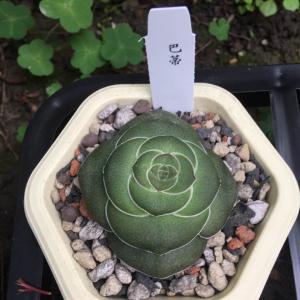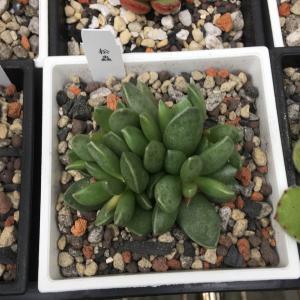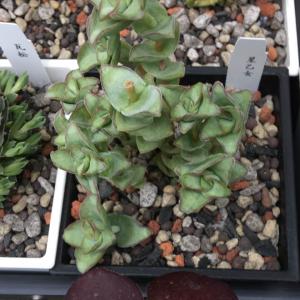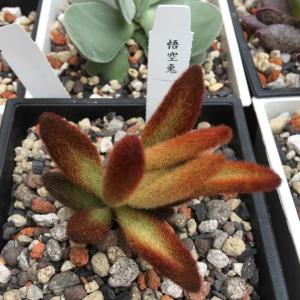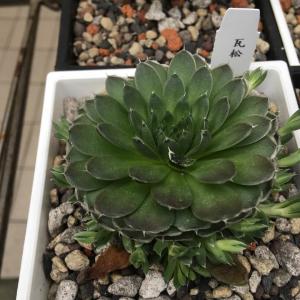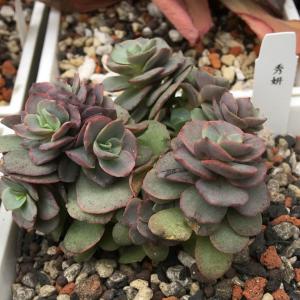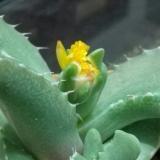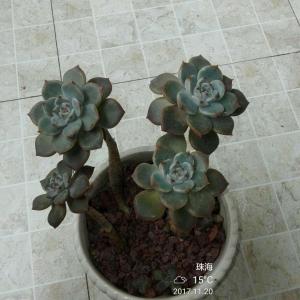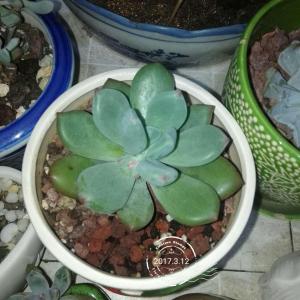文章
Miss Chen
2018年02月11日

Description: This small wildflower is 3-9" tall. Sometimes it branches from the base, otherwise the stems are unbranched. The stems are light green, 4-sided, and slightly to moderately hairy, especially along the angles of the sides. Pairs of opposite leaves occur along the stems. The leaf blades are ½–¾" long and about one-half as much across; they are lanceolate, ovate, or oval, while their revolute margins are smooth to crenate with a few blunt teeth. Generally, the upper leaves are more slender and less likely to have teeth than the lower leaves. The upper leaves are sessile, while the lower leaves have short petioles about 1/8" (3 mm.) long. The upper leaf surface is medium green and hairless to sparsely pubescent, while the lower surface is pale green and sparsely to densely pubescent. In this variety of Small Skullcap, all of the hairs lack sticky glandular secretions.
Close-up of Flowers
Individual flowers develop from axils of the upper leaves; this occurs along the upper half of each plant. Each flower is about 1/3" (8 mm.) long, consisting of a tubular corolla with upper and lower lips, a short 2-lipped calyx, 4 stamens, and a pistil with a single style that is cleft at its tip. The corolla is light blue to blue-violet, except for a white patch on the lower lip that is covered with blue-violet dots. The upper lip is short and recurved along its margin, while the lower lip is long and usually divided into 3 lobes with undulate margins. The calyx is usually greenish red and hairy; there is a prominent protuberance along the back of its upper lip. The pedicels are about 1/8" (3 mm.) long, greenish red, and hairy. The blooming period occurs from late spring to early summer and lasts about 1½ months. On each plant, only a few flowers are in bloom at the same time. In addition to these flowers, there are also cleistogamous flowers that are self-fertile and inconspicuous. The flowers are replaced by 2-lipped seed capsules with concave upper sides. At maturity, the capsules split open into 2 parts to release the seeds. Individual seeds are about 1 mm. long, ovoid, and indented on one side; their surfaces are covered with minute spiky tubercles. The root system produces rhizomes with tuberous swellings at intervals. This wildflower can spread vegetatively by the rhizomes, or it can reseed itself.
Cultivation: The preference is full or partial sun, dry conditions, and shallow soil containing some sandy or rocky material. This wildflower will adapt to sunny rock gardens and does not tolerate much competition from taller plants.

Range & Habitat: This variety of the native Small Skullcap is occasional in the northern half of Illinois and uncommon in the southern half of the state (see Distribution Map). Habitats include hill prairies, upland prairies, gravel and sand prairies, barren savannas, thinly wooded bluffs and slopes, rock ledges, limestone glades, and abandoned fields. Small Skullcap usually occurs where the ground vegetation is somewhat sparse, and it probably benefits from occasional wildfires.
Faunal Associations: The flowers are cross-pollinated by various bees, including Mason bees (Osmia spp., Hoplitis pilosifrons), Little Carpenter bees (Ceratina spp.), and Halictid bees (Halictus spp., Lasioglossum spp.). Bees usually suck nectar from the flowers, although some of them also collect pollen. Less common floral visitors include skippers and Syrphid flies, which are less effective at cross-pollination. Insects that are known to feed on the foliage of Small Skullcap include the caterpillars of Prochoreutis inflatella (Skullcap Skeletonizer Moth), the leaf beetles Phyllobrotica lengi and Phyllobrotica limbata, and Asphaera lustrans (Shiny Flea Beetle). The foliage of Scutellaria spp. (Skullcaps) are usually bitter and avoided by mammalian herbivores. It is possible that the tiny tuberculate seeds of Small Skullcap, when they are wet, can cling to the feathers of birds, the feet of animals, and the shoes of humans. By this means, they may be distributed to new areas.
Photographic Location: The Coneflower Hill Prairie near Lake Shelbyville in Moultrie County, Illinois.

Comments: Small Skullcap is easily overlooked because of its diminutive size, but its flowers are very attractive when they are viewed up-close. The variety of Small Skullcap that is described here, var. missouriensis, has hairs that lack glandular secretions, while var. parvula and var. australis have foliage with some glandular hairs. Otherwise, these different varieties are similar to each other. Regardless of variety, Small Skullcap can be distinguished from other species in its genus by the small size of individual plants (3-9" tall), the small size of its flowers (about 1/3" long), and its form of inflorescence: flowers are produced individually from the axils of the leaves, rather than in terminal or axillary racemes. Scientific synonyms of Scutellaria parvula missouriensis include Scutellaria parvula leonardii and Scutellaria leonardii. As a result of these other scientific names, this variety of Small Skullcap is sometimes referred to as Leonard's Skullcap.
Close-up of Flowers
Individual flowers develop from axils of the upper leaves; this occurs along the upper half of each plant. Each flower is about 1/3" (8 mm.) long, consisting of a tubular corolla with upper and lower lips, a short 2-lipped calyx, 4 stamens, and a pistil with a single style that is cleft at its tip. The corolla is light blue to blue-violet, except for a white patch on the lower lip that is covered with blue-violet dots. The upper lip is short and recurved along its margin, while the lower lip is long and usually divided into 3 lobes with undulate margins. The calyx is usually greenish red and hairy; there is a prominent protuberance along the back of its upper lip. The pedicels are about 1/8" (3 mm.) long, greenish red, and hairy. The blooming period occurs from late spring to early summer and lasts about 1½ months. On each plant, only a few flowers are in bloom at the same time. In addition to these flowers, there are also cleistogamous flowers that are self-fertile and inconspicuous. The flowers are replaced by 2-lipped seed capsules with concave upper sides. At maturity, the capsules split open into 2 parts to release the seeds. Individual seeds are about 1 mm. long, ovoid, and indented on one side; their surfaces are covered with minute spiky tubercles. The root system produces rhizomes with tuberous swellings at intervals. This wildflower can spread vegetatively by the rhizomes, or it can reseed itself.
Cultivation: The preference is full or partial sun, dry conditions, and shallow soil containing some sandy or rocky material. This wildflower will adapt to sunny rock gardens and does not tolerate much competition from taller plants.

Range & Habitat: This variety of the native Small Skullcap is occasional in the northern half of Illinois and uncommon in the southern half of the state (see Distribution Map). Habitats include hill prairies, upland prairies, gravel and sand prairies, barren savannas, thinly wooded bluffs and slopes, rock ledges, limestone glades, and abandoned fields. Small Skullcap usually occurs where the ground vegetation is somewhat sparse, and it probably benefits from occasional wildfires.
Faunal Associations: The flowers are cross-pollinated by various bees, including Mason bees (Osmia spp., Hoplitis pilosifrons), Little Carpenter bees (Ceratina spp.), and Halictid bees (Halictus spp., Lasioglossum spp.). Bees usually suck nectar from the flowers, although some of them also collect pollen. Less common floral visitors include skippers and Syrphid flies, which are less effective at cross-pollination. Insects that are known to feed on the foliage of Small Skullcap include the caterpillars of Prochoreutis inflatella (Skullcap Skeletonizer Moth), the leaf beetles Phyllobrotica lengi and Phyllobrotica limbata, and Asphaera lustrans (Shiny Flea Beetle). The foliage of Scutellaria spp. (Skullcaps) are usually bitter and avoided by mammalian herbivores. It is possible that the tiny tuberculate seeds of Small Skullcap, when they are wet, can cling to the feathers of birds, the feet of animals, and the shoes of humans. By this means, they may be distributed to new areas.
Photographic Location: The Coneflower Hill Prairie near Lake Shelbyville in Moultrie County, Illinois.

Comments: Small Skullcap is easily overlooked because of its diminutive size, but its flowers are very attractive when they are viewed up-close. The variety of Small Skullcap that is described here, var. missouriensis, has hairs that lack glandular secretions, while var. parvula and var. australis have foliage with some glandular hairs. Otherwise, these different varieties are similar to each other. Regardless of variety, Small Skullcap can be distinguished from other species in its genus by the small size of individual plants (3-9" tall), the small size of its flowers (about 1/3" long), and its form of inflorescence: flowers are produced individually from the axils of the leaves, rather than in terminal or axillary racemes. Scientific synonyms of Scutellaria parvula missouriensis include Scutellaria parvula leonardii and Scutellaria leonardii. As a result of these other scientific names, this variety of Small Skullcap is sometimes referred to as Leonard's Skullcap.
0
0
文章
Miss Chen
2018年02月10日

Description: This perennial wildflower forms a small clump of basal leaves about 6-12" across, later developing leafy flowering stalks about 2' tall. The blades of the basal leaves are 2-5" long and about 3/8" (9 mm.) across, tapering gradually into slender petioles about 1-3" long (3-8" total length). The blades of the alternate leaves are 2-4" long and about 3/8" (9 mm.) across; they are sessile or clasp the flowering stalks slightly. Both basal and alternate leaves are medium green and hairy on both their lower and upper sides; they are linear-oblong or linear-oblanceolate and usually smooth along their margins. Sometimes a few widely spaced and shallow teeth are visible along the leaf margins.
The flowering stalks are light green or pale brownish green, terete, and unbranched; they are covered with abundant spreading hairs. Alternate leaves with ascending blades are restricted to the lower one-half of each stalk, while the upper half of the stalk is naked. Each stalk terminates in a single flowerhead about 2–2½" across. Numerous disk florets are concentrated in the center of the flowerhead; they are dark brown or black. The ray florets are located along the margins of the flowerhead, forming 8-13 petal-like yellow rays. The disk florets are fertile, while the ray florets are sterile. The base of each flowerhead is defined by an overlapping series of floral bracts (phyllaries) that are green, hairy, and lanceolate-oblong in shape. The blooming period occurs from mid-summer to early fall and lasts 1-2 months. At maturity, the disk florets are replaced by oblongoid achenes
g. At its apex, each achene has a crown of tiny scales. The root system is fibrous. This wildflower reproduces by reseeding itself.
Stem & Leaves
Cultivation: The preference is full sun, dry-mesic conditions, and a thin rocky soil that is calcareous (typically containing limestone or dolomite). Because this is one of the less aggressive coneflowers, taller and more aggressive plants should be kept away from it.
Range & Habitat: The native Missouri Coneflower has been found in only a few counties in southern Illinois (see Distribution Map); it is considered rare and state-listed as 'endangered.' This wildflower is found primarily in hilly areas of Arkansas and Missouri; in neighboring states, it is rare. Habitats consist of hill prairies, limestone and dolomite glades, and barren scrubby savannas in upland areas. This wildflower is found in high quality natural areas. While it is less popular than some other Rudbeckia spp. (Black-Eyed Coneflowers), it is also cultivated in gardens.
Faunal Associations: The nectar and pollen of the flowerheads attract a wide variety of insects, including long-tongued bees, short-tongued bees, wasps, flies, beetles, butterflies, and skippers. Two species of bee are specialist pollinators (oligoleges) of this and other Rudbeckia spp. (Black-Eyed Coneflowers): Andrena rudbeckiae and Heterosarus rudbeckiae. Miscellaneous insects feed on the foliage and other parts of these species: this includes the caterpillars of the butterflies Chlosyne nycteis (Silvery Checkerspot) and Chlosyne gorgone (Gorgone Checkerspot), the caterpillars of several moths, the leaf beetles Microrhopala excavata and Paria thoracica, and some aphids (see the Insect Table for a listing of these species).
Photographic Location: The wildflower garden of the webmaster in Urbana, Illinois.
Comments: This perennial coneflower looks like a Black-Eyed Susan (Rudbeckia hirta) with skinny leaves (usually less than ½" across). It is one of the coneflowers with widely spreading rays that don't droop downward. Like some other species in this genus, the petaloid rays along the margins of the flowerheads appear to be solid yellow to the human eye, but to bees and other flower-visiting insects they appear to be bicolored instead. This is because the outer one-half of each ray reflects ultraviolet light, while the inner one-half doesn't. Unlike the human eye, the eyes of bees and many other insects can detect ultraviolet light. Therefore, the flowerheads are actually more showy than one would assume.
The flowering stalks are light green or pale brownish green, terete, and unbranched; they are covered with abundant spreading hairs. Alternate leaves with ascending blades are restricted to the lower one-half of each stalk, while the upper half of the stalk is naked. Each stalk terminates in a single flowerhead about 2–2½" across. Numerous disk florets are concentrated in the center of the flowerhead; they are dark brown or black. The ray florets are located along the margins of the flowerhead, forming 8-13 petal-like yellow rays. The disk florets are fertile, while the ray florets are sterile. The base of each flowerhead is defined by an overlapping series of floral bracts (phyllaries) that are green, hairy, and lanceolate-oblong in shape. The blooming period occurs from mid-summer to early fall and lasts 1-2 months. At maturity, the disk florets are replaced by oblongoid achenes

g. At its apex, each achene has a crown of tiny scales. The root system is fibrous. This wildflower reproduces by reseeding itself.
Stem & Leaves
Cultivation: The preference is full sun, dry-mesic conditions, and a thin rocky soil that is calcareous (typically containing limestone or dolomite). Because this is one of the less aggressive coneflowers, taller and more aggressive plants should be kept away from it.
Range & Habitat: The native Missouri Coneflower has been found in only a few counties in southern Illinois (see Distribution Map); it is considered rare and state-listed as 'endangered.' This wildflower is found primarily in hilly areas of Arkansas and Missouri; in neighboring states, it is rare. Habitats consist of hill prairies, limestone and dolomite glades, and barren scrubby savannas in upland areas. This wildflower is found in high quality natural areas. While it is less popular than some other Rudbeckia spp. (Black-Eyed Coneflowers), it is also cultivated in gardens.
Faunal Associations: The nectar and pollen of the flowerheads attract a wide variety of insects, including long-tongued bees, short-tongued bees, wasps, flies, beetles, butterflies, and skippers. Two species of bee are specialist pollinators (oligoleges) of this and other Rudbeckia spp. (Black-Eyed Coneflowers): Andrena rudbeckiae and Heterosarus rudbeckiae. Miscellaneous insects feed on the foliage and other parts of these species: this includes the caterpillars of the butterflies Chlosyne nycteis (Silvery Checkerspot) and Chlosyne gorgone (Gorgone Checkerspot), the caterpillars of several moths, the leaf beetles Microrhopala excavata and Paria thoracica, and some aphids (see the Insect Table for a listing of these species).
Photographic Location: The wildflower garden of the webmaster in Urbana, Illinois.
Comments: This perennial coneflower looks like a Black-Eyed Susan (Rudbeckia hirta) with skinny leaves (usually less than ½" across). It is one of the coneflowers with widely spreading rays that don't droop downward. Like some other species in this genus, the petaloid rays along the margins of the flowerheads appear to be solid yellow to the human eye, but to bees and other flower-visiting insects they appear to be bicolored instead. This is because the outer one-half of each ray reflects ultraviolet light, while the inner one-half doesn't. Unlike the human eye, the eyes of bees and many other insects can detect ultraviolet light. Therefore, the flowerheads are actually more showy than one would assume.
0
0
文章
权问薇
2018年02月05日


豆瓣绿的花期与花态
它的花期是2月至4月与9月至12月,两个阶段。但其花朵并不像其它植物那样明显,只是从叶子中间长出一根火柴棍粗细的、白色的小花序。花朵非常的小,若用放大镜看的话,才可以看到花序上的小花朵,非常的密集,但是花蕊、花瓣、花芯都很具有。
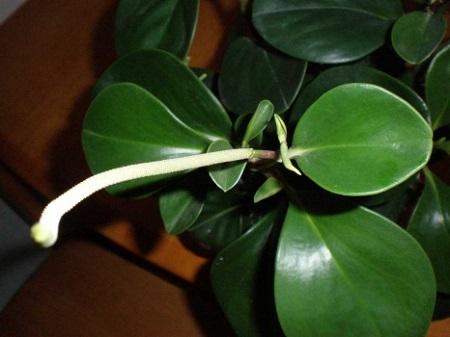
豆瓣绿开花后怎么处理
此植物主要是观其叶子,而且它的花并没有什么太出彩的地方,所以其花也没有观赏性,在开花时还会消耗植物过多的养分,导致其叶子因养分不足而降低观赏度,在其开花后我们就要将其花序剪除,来保证叶子的正常生长。
所以在养殖此植物时,临近花期时,就要经常观察,若有花序长出,就要及时剪除。

需要剪除花朵的其它植物
其实许多常见的植物开花后都要将其剪除,来保证植物叶子的健康与观赏度。有些观叶植物的花更是留不得,因其花谢后,植物也将死亡,例如多肉植物。许多常见的多肉植物只要一天花,植物就会随着花谢而死亡,对于爱肉的友友们来说,开花是一件非常可怕的事。好在豆瓣绿开花只会影响其叶子的生长,不会造成植物死亡。

0
0
文章
权问薇
2018年02月03日


一、播种繁殖
1.种植的时间
一般它最经常用的繁殖方法就是播种的方式,具体的时间就是在8月低到9月初的这段时间,因为这时候的天气已经渐渐变凉,并不像夏天那么炎热了,所以此时播种效果更好。
2.种植的方法
种之前,我们要先把培养土准备一下,一般就是找来一些腐叶土和河沙配置而成。土壤准备好了之后,下面就可以取来种子开始撒播了,因为它的种子是非常小的,所以在种的时候,不能让种子之间过于紧凑,不然会让以后长出来的小苗显得很细弱,种完了之后,我们就可以用一些细土撒在种子上,将它盖上,盖的时候,不能让土层太厚,或者不盖也可以。然后就可以在盆子上盖上玻璃或蒙上薄膜去保持湿度和温度了,并且还要将它放在阴凉通风的地方。过上不久,小苗就会长出来了。

3.后期养护
种子种完之后,我们要维持温度在20度左右,一般过上7到10天就可以长出小苗,但是在这期间,如果出现土壤很干情况时,就要及时给盆子浸水,以保持土壤湿润。等到小苗长出来之后,我们就要把上面的覆盖物揭掉了,然后把温度控制在15度就可以了。
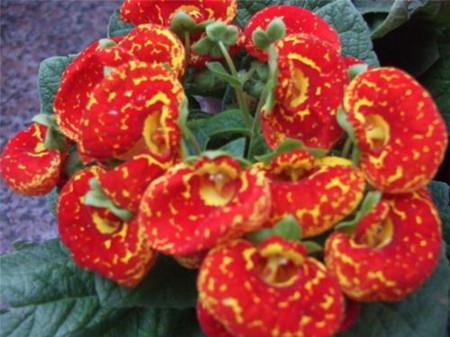
二、扦插法
出了上面的播种方法,还有一些少量的植株需要用到扦插的方法来实现繁殖。首先我们可以从它的植株上找到一块较为粗壮的根茎,然后一同切下,之后就可以将它们一同插在准备好的盆土内,插完了之后我们要适当的给它遮阴和保湿,基本上过不了多长时间,它就会开始生根了,等到根生出来之后,我们就可以将它进行移栽了。但是因为扦插的成活率是很低的,所以很少会用到。
0
0



